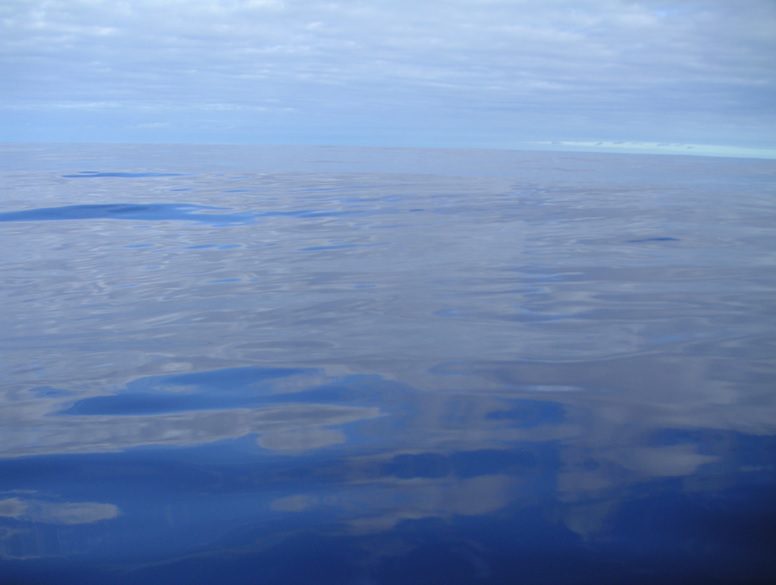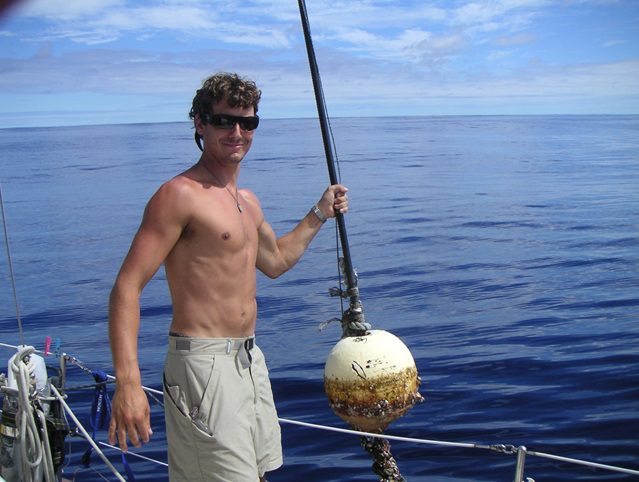The Central Pacific
Tuesday Aug 24, 2004
N 34o 17’
W 152o 00’
875 Miles north of Oahu

It has been over a week since leaving Oahu. With little wind, the days merge together, with an occasional distraction or event that makes an impression. Still over 1500 miles from the US coast, bits and pieces of rubbish float by at regular intervals: a plastic bottle, a sheet of Styrofoam, a pail. Yesterday, a free floating buoy with a long pole carrying the tattered remains of three colorful pennants appeared off the bow. It took only a slight change of course to take a closer look. On land it would have not been worthy of consideration, but out in the middle of thousands of miles of ocean, an isolated piece of flotsam is an intriguing object requiring investigation. All hands were on deck. Under slack winds the pennants slowly drew along side. Closer inspection revealed the object to consist of a severed mooring line covered with mussels, an eight foot plastic pole, and a one foot diameter Styrofoam buoy with a crab hanging on for dear life. With no desire to carry a buoy on board, we contemplated it for several minutes and then returned it to its fate.

Meanwhile, the winds had drop to the point that the surface of the water had become glassy, losing all texture and reflecting the clouds without a ripple. The surface was smooth, but the sea undulated with massive swells that marched west to east, as far as the eye could see. These huge swells, on the lateral scale of a football field, hinted at the tremendous power and scale of the ocean, even more than the pounding waves we had experienced leaving Oahu. (Pedro, a surfer, regarded them with lust, imagining the excellent surf they would make on some far shore.) Scattered over the surface of these smooth swells were thousands of small jellyfish, each the size of a silver dollar. These jellyfish have dorsal fins that stick up out of the water like small sails. Apparently, they too were waiting for wind. By night fall, however, there was still no wind and we used the motor to push Lillian through the water. Over the last week, the moon has been setting before midnight, providing a spectacular night sky once it becomes fully dark. Falling stars have become almost a common occurrence, but in the last week, they have seemed to have become more powerful, some leaving thick brilliant trails that hang in the sky longer than seems possible. At 3:00 this morning, I awoke to the sound of Peter raising sails followed by the silencing of the engine. “The winds came up the same time as Venus,” he reported. So far they have been with us all day. In another 25 miles Lillian will be at the same latitude as Huntsville, Alabama.